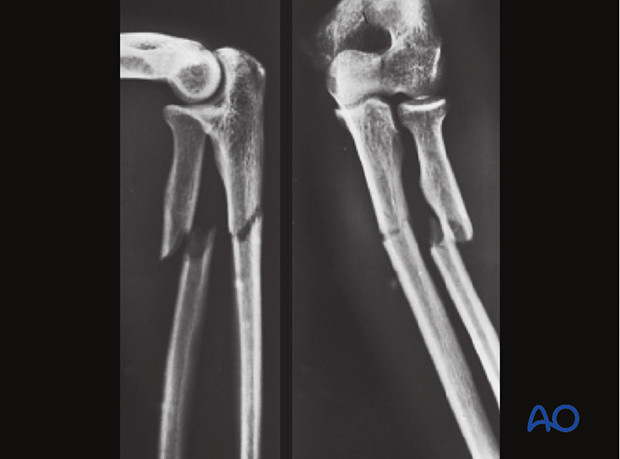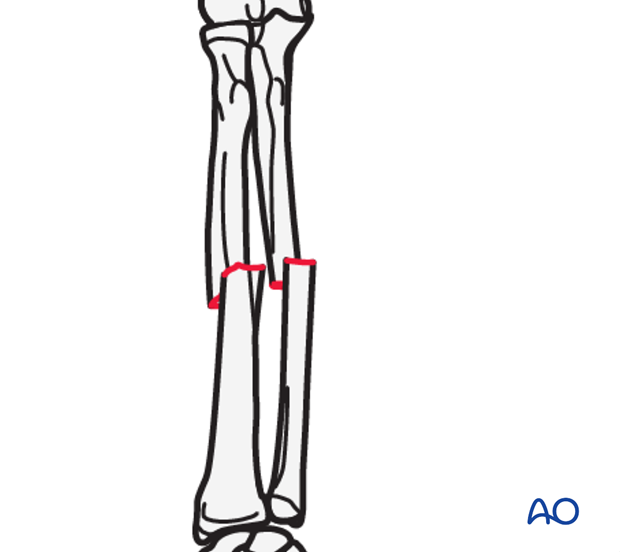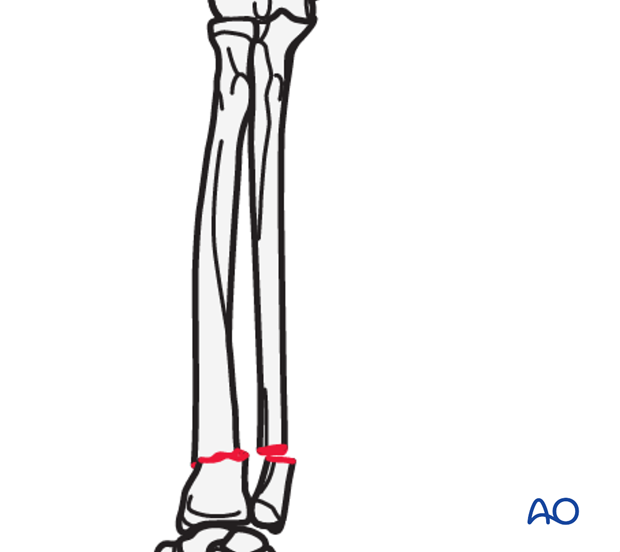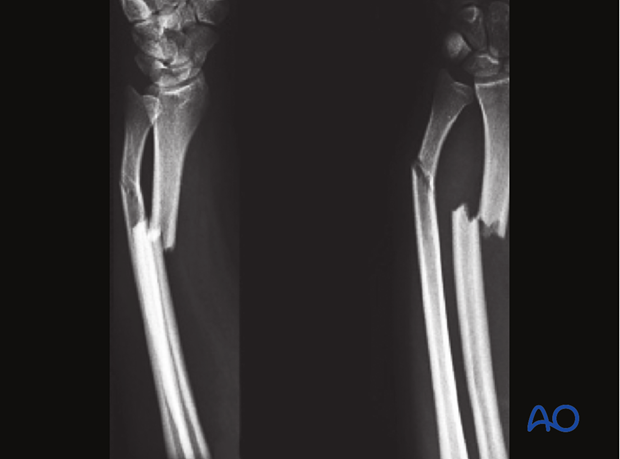Simple fracture of the radius and the ulna
General considerations
When both bones are fractured, they are classified independently according to the morphology of each fracture.
Simple fractures are often the result of indirect mechanisms, such as a fall onto an outstretched hand, sporting activities, etc.
When both bones are fractured there is increased instability of each of the fractures.
They may very rarely be associated with an instability of the distal radioulnar joint (DRUJ) or of the radiocapitellar joint.
The surgical approach and operative treatment of radial fractures varies according to the location of the fracture.
It can be helpful to indicate the fracture site in the description.
Fracture in the proximal third
If the fracture occurs in the proximal third, this is indicated in the AO/OTA system with the qualifier (a).
For example, the fracture illustrated is classified as AO/OTA 2R2A3(a) 2U2A3(a).


Fracture in the middle third
If the fracture occurs in the middle third, this is indicated in the AO/OTA system with the qualifier (b).
For example, the fracture illustrated is classified as AO/OTA 2R2A3(b) 2U2A3(b).


Fracture in the distal third
If the fracture occurs in the distal third, this is indicated in the AO/OTA system with the qualifier (c).
For example, the fracture illustrated is classified as AO/OTA 2R2A3(c) 2U2A3(c).















